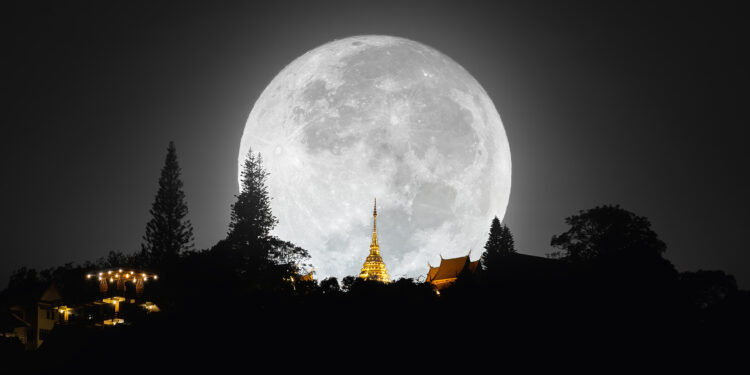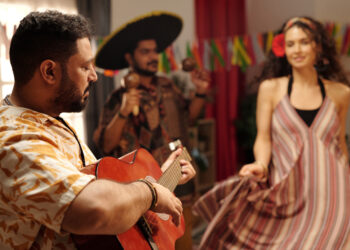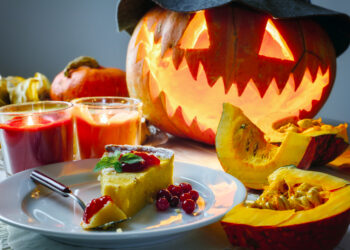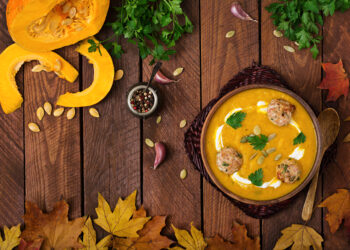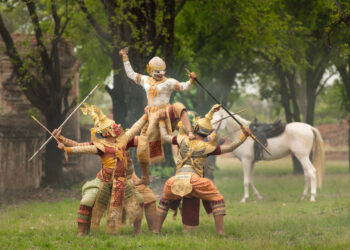Sharad Purnima marks the brightest full moon night of the autumn season, celebrated with devotional songs, moonlit gatherings, and bowls of cooling kheer placed under the night sky. Within Indo-Caribbean communities, this festival blends Indian tradition with Caribbean rhythm – offering a night that’s spiritual, cultural, and deeply social. From moon mythology and Ayurvedic beliefs to the way Trinidadian, Guyanese, and Jamaican families observe the occasion today, this guide explores the meaning, food, and modern diaspora celebrations of Sharad Purnima. Think of it as a cultural full moon – glowing with stories, sweets, and a splash of Caribbean flair.
Sharad Purnima: A Moonlit Beginning
Sharad Purnima is one of those nights when the moon looks absolutely stunning. In India, it is known as the brightest, clearest full moon of the year – and, according to traditional belief, the moon drips amrit (nectar) onto the earth. In Indo-Caribbean households, this belief travelled across the seas with indentured labourers and continues to shimmer today, mingled with Caribbean skies, steelpan rhythms, and the scent of simmering kheer (sweet rice pudding).
For Indo-Caribbeans in Trinidad, Guyana, Suriname, Jamaica, and now in the UK diaspora, Sharad Purnima is not just a religious date but a cultural reminder of resilience, adaptation, and joy.
The Mythology Behind the Moon
In Hindu tradition, Sharad Purnima is linked with Goddess Lakshmi, the goddess of wealth and prosperity, and with Lord Krishna’s Raas Leela, where he danced with the Gopis under the moonlight. The night symbolises abundance, divine love, and cosmic energy.
For Caribbean Hindus, these myths were retold on sugar estates and in village mandirs, often without the Sanskrit verses but with heartfelt devotion. Grandmothers would describe how the moon on this night is “special,” urging children to look up and absorb its blessings. These oral traditions kept the myth alive, adapted with the sounds of crickets and the salt of the Caribbean breeze.
Food Traditions: Kheer Under the Moon
If there is one dish that defines Sharad Purnima, it is kheer. In India, rice, milk, and sugar are simmered, then left out under the moon overnight, believed to absorb cooling and medicinal properties.
In the Caribbean, the tradition continued, but with local flair. Coconut milk often replaced cow’s milk, condensed milk sweetened the dish, and nutmeg or bay leaf might sneak into the pot. In some families, bowls of kheer were placed on rooftops or in gardens so they could ‘sleep’ under the October moonlight. By morning, it became a breakfast blessed by the moon.
In today’s UK Indo-Caribbean kitchens, you might see Pyrex bowls of kheer sitting on London balconies or Birmingham gardens, proof that tradition adapts but never disappears.
Sharad Purnima in the Caribbean Calendar
While Diwali is the marquee festival, Sharad Purnima holds a quieter but important place. It was often a night of community satsangh (devotional singing), with people gathering to chant bhajans, share food, and sit under the full moon. Unlike Diwali’s fireworks or Holi’s colours, this festival leaned towards serenity- a pause before the busier festive season.
In Trinidad, satsangs would often include dholak drums alongside harmoniums, giving the chants a Caribbean cadence. In Guyana, families remembered to leave kheer outdoors even if clouds covered the moon. The act itself – setting out the food – was symbolic, linking them back to ancestors across the seas.
Modern Diaspora Celebrations in the UK
Today, Indo-Caribbeans in the UK are finding new ways to observe Sharad Purnima. Community halls in London, Leicester, and Birmingham host Sharad Purnima satsangs where bhajans echo alongside Caribbean refreshments. Families post photos of their moonlit kheer on WhatsApp groups and Instagram stories, reminding younger generations of the link between food, moon, and meaning.
For the younger crowd, the night also becomes a cultural marker: an excuse to gather, dress in festive wear, and swap stories about how their grandparents described “the big moon night.” It’s quieter than Carnival, less elaborate than Diwali, but rich in nostalgia and identity.
Spiritual and Ayurvedic Beliefs
Tradition holds that the moon’s rays on Sharad Purnima carry healing qualities. Ayurvedic texts suggest that kheer exposed to moonlight absorbs cooling energy that aids digestion and calms the body. In the Caribbean, this belief was often retold in simpler terms: “The moon blesses the food.”
Whether you take it as literal medicine or cultural poetry, the act of setting food under the night sky carries symbolic weight. It’s a way of blending nature and nurture, reminding us of the intimate relationship between the cosmos and the kitchen.
Sharad Purnima vs Other Lunar Nights
Many Caribbean Hindus already celebrate Kartik Purnima or mark full moon fasts (purnima vrat), but Sharad Purnima stands apart for its mix of serenity and sweetness. Unlike Holi or Diwali, there are no fireworks or messy powders – just music, moonlight, and a bowl of something comforting.
For Indo-Caribbean families, that simplicity has made the festival easy to maintain. Even if you can’t attend a temple, you can cook kheer, step outside, and share the experience with your family.
UK Twist: Caribbean Meets Curry House
In the UK, Sharad Purnima is also gaining a foodie twist. Some families experiment with fusion kheer recipes – think coconut-milk kheer with British strawberries, or even oat-based kheer for the health-conscious. Caribbean flavours, such as tamarind and sorrel, sometimes sneak into side dishes served alongside.
Community groups often add a cultural programme: a little chutney music, Indo-Caribbean poetry, or even steelpan renditions of bhajans. It’s a reminder that tradition needn’t be stiff; it evolves, just like the diaspora itself.
Why It Matters in 2025?
In 2025, as younger generations search for identity within the Indo-Caribbean story, festivals like Sharad Purnima offer a way back. It’s not as commercial as Diwali or as vibrant as Holi, but it is intimate, reflective, and rooted.
Celebrating Sharad Purnima in the Caribbean and now in the UK, is about more than the moon. It’s about remembering how ancestors carried small traditions in big hearts, how food and faith created continuity, and how every full moon is a reminder of cycles, resilience, and renewal.
How to Celebrate Sharad Purnima in the UK?
- Cook kheer Indo-Caribbean style – Use coconut milk, condensed milk, and a hint of nutmeg.
- Place it outdoors – Balcony, garden, or even a windowsill to ‘catch’ the moonlight.
- Join a satsang – Look for local Hindu mandirs or Indo-Caribbean groups hosting events.
- Create family rituals – Share stories, light a diya, or simply gather under the moon.
- Add a Caribbean touch – Pair kheer with a sorrel drink, or play a steelpan bhajan playlist.
Final Thoughts!
Sharad Purnima is proof that culture travels, bends, and blossoms in new soil. What began as an Indian harvest festival under the October moon is now a Caribbean-UK tradition that mixes bhajans with chutney soca, kheer with condensed milk, and moon mythology with island skies.
So, this 6th of October, when the moon hangs bright and full, take a moment to step outside. Share a bowl of kheer, listen to a bhajan, or simply breathe in the night air. It’s a reminder that no matter where the Indo-Caribbean community goes, the moon will always follow.
Follow Currybien.co.uk for more stories on Indo-Caribbean festivals, food, and culture – because traditions, like full moons, are best shared.


